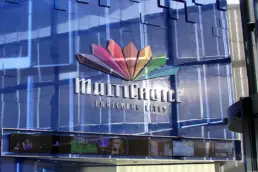As South African men’s football takes a break, it’s time to review the data and answer some pressing questions on the season that was. We review the state of viewership and how external actors like load-shedding have impacted the viewing audiences, the lack of sponsorships for both the clubs and the league as well as provide a statistical breakdown of the performances on the pitch.
Television Viewership
According to data from Nielsen, the total unique audience for all football related broadcasts in South Africa had steadily been increasing over the last eleven years, peaking after the Fifa World Cup held in Russia in 2018. The total unique audience, post the World Cup and prior to the pandemic, was roughly 40 million viewers and saw a decline of roughly 12% by 2021, as the pandemic took effect.
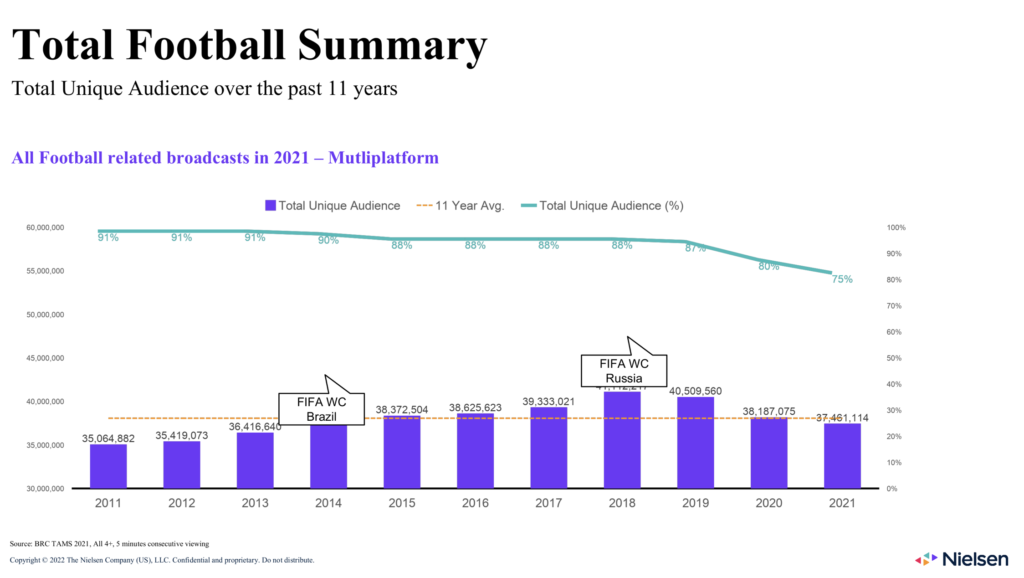
While the total unique audience declined roughly 5% from 2020 to 2021, the same cannot be said of the South African Premier League. According to Nielsen data, all three of the major competitions saw significant reductions in unique audience over the past season with the MTN 8 and DSTV Premiership both declining by 20 percent. The DSTV Diski Challenge is the only competition, among those for which data was obtained, to buck the trend with 19% growth in average viewing audience.
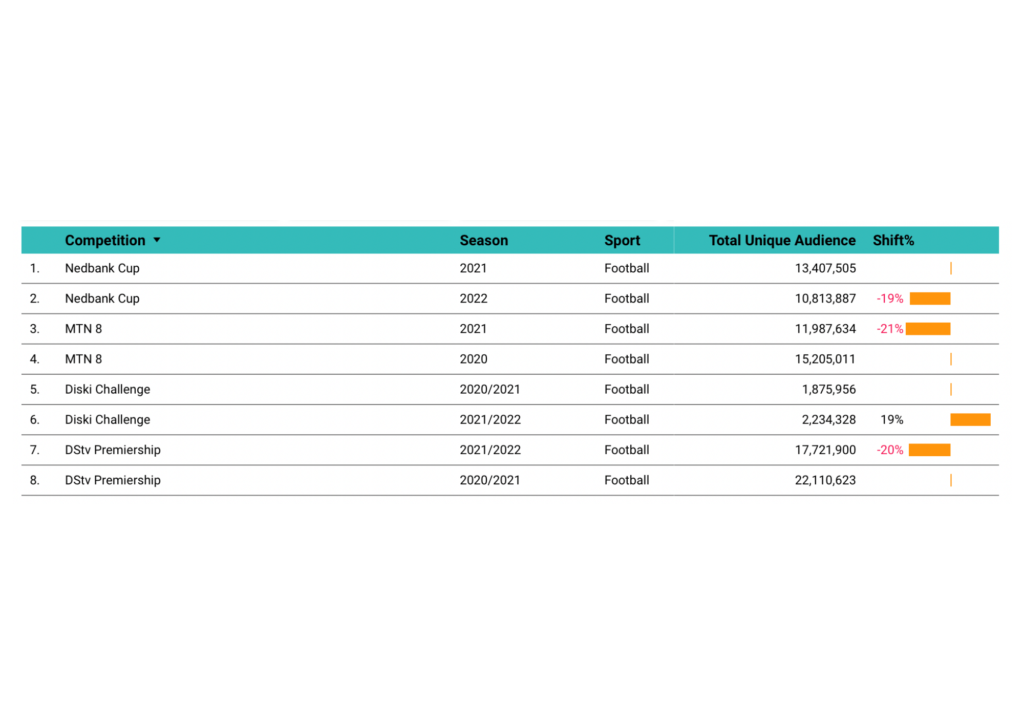
SABC and Load-Shedding
A number of factors could be attributed to have caused the decrease in viewing audience but two stand out. The first of these factors is the migration to Digital Terrestrial Television (DTT) which has been completed in the Free State, Northern Cape, North-West, Limpopo and Mpumalanga while some 4 million TV sets countrywide still only receive analogue signals. In addition, a poll we conducted among our social media audience indicated that 88.6% of them did not know what DTT is and how to access it.
The second major factor is the effect of load-shedding. According to EskomSePush, South Africa has had 929 hours or 39 days of rolling blackouts. This has heavily affected the average time spent viewing by South Africans in 2022 which continues to track well below that of 2021.
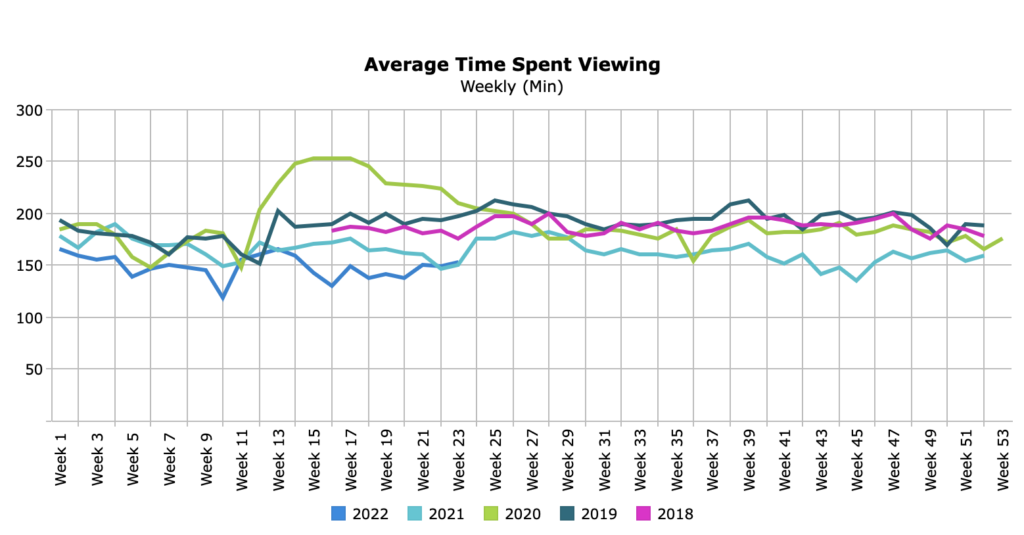
This is illustrated in the declining viewership of the country’s biggest football match, the Soweto Derby. The derby in November 2021 delivered the lowest unique audience in recent memory, 48% below the average over the past 5 games. Nationwide load-shedding negatively impacted on viewership as 5.4 million viewers were affected on the 6th of November resulting in a lower unique audience both SABC and SuperSport. The total available audience was 28% lower in comparison to the derby in March and 31% lower compared to the derby in January 2021.
In terms of football viewership, an additional factor may be the current broadcast agreement between SuperSport and the SABC which is understood to allow the SABC to broadcast 46 PSL matches equating to two matches each week.

Load-shedding aside, viewership of the Soweto Derby has been declining for some time. Even as audiences were stuck in their homes during the covid pandemic with ample time to watch the derby, the viewing audience size decreased by 11.3%.
Be that as it may, the derby is still the biggest match in the season. The Carling Black Label Cup clash at the beginning of the season was the most watched match all year followed by the MTN 8 fixture between Mamelodi Sundowns and Kaizer Chiefs in September where the “Brazillians” won 2-0. Three of the fifteen most watched matches were Soweto Derbies and half of the most watched matches involved Kaizer Chiefs or Orlando Pirates.
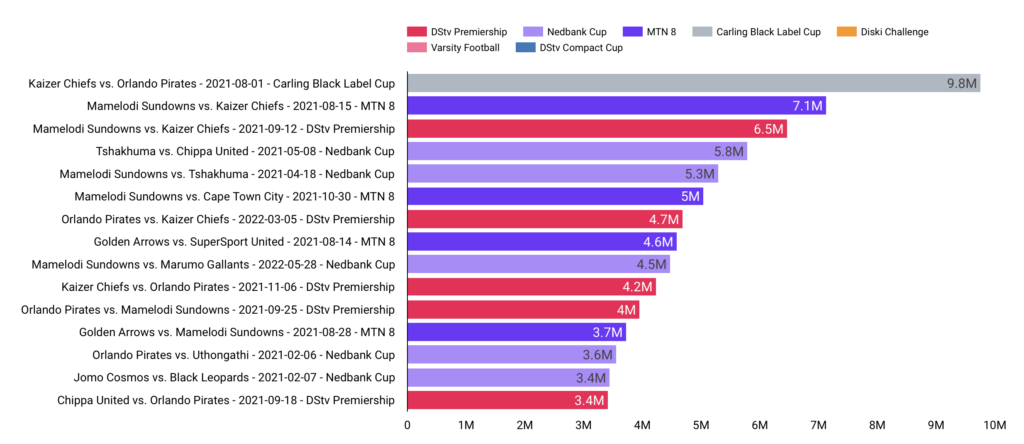
Sponsorship Overview
The decline in viewing audiences has had an effect off the pitch with clubs finding it difficult to attract sponsors. At the beginning of the 2021/22 season, only seven of the clubs in the DSTV Premiership had a front of shirt sponsor, one of which was from the Nelson Mandela Bay municipality who sponsor Chippa United. Only five of the clubs had sleeve sponsorships which again included a municipality linked sponsorship in the form of Durban Tourism who sponsor Golden Arrows.
The picture changed only slightly as the season progressed when Maritzburg United announced that they had agreed a value in kind sponsorship with the Gift of The Givers charity organisation. Kaizer Chiefs also announced a sleeve sponsorship with their longstanding mobility partner Toyota to replace Hollard.
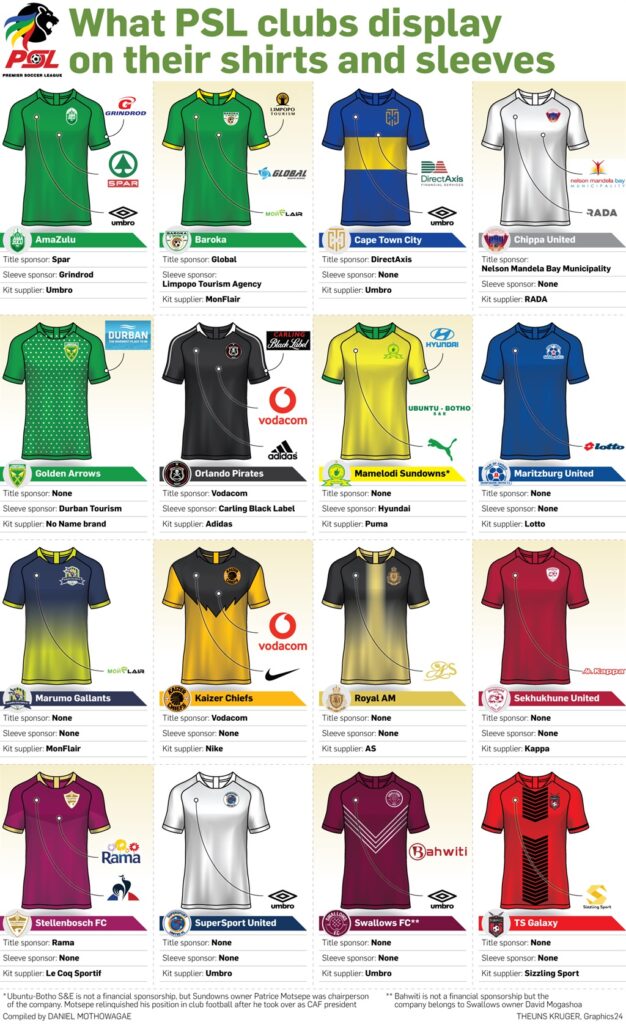
League Finances
In the league boardrooms, discussions must be ongoing about how to recover from the financial loss of the covid pandemic which came on the back of losing a major sponsor in Telkom. In 2019 when the league made record revenue of R1 billion, Telkom contributed R57.2 million alongside Absa’s R136 million and the R600 million in broadcast revenue from SuperSport. Since then, Absa and Telkom both opted not to renew their agreements with the league resulting in a reduction in revenue of over R180 million. Multichoice stepped into the breach by pumping R41.8 million into the MultiChoice Diski Challenge and launched the DSTV Compact Cup to fill the void.
Because the league has not released detailed financial statements since 2019/20, it is unclear how much Multichoice paid for the Diski Challenge and the naming rights for the league but we can estimate this. By looking through the 2018 and 2019 financial statements as well as the interim results for 2020, a picture begins to emerge.
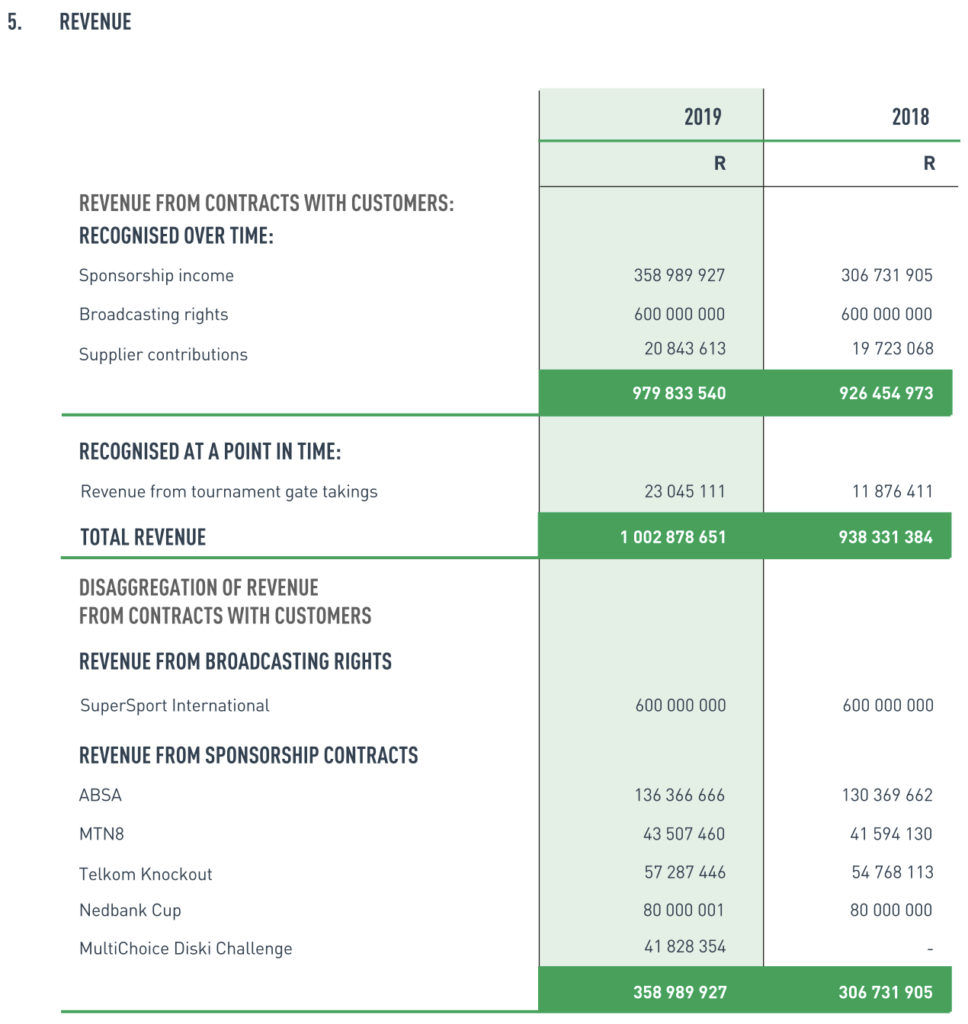
The 2020 interim financial results indicate that the league generated revenue of R968.8 million which points to the DSTV naming rights agreement being in the region of roughly R130 million, similar to what Absa used to pay. While the interim results also indicate a loss for the year of R1.3 million in 2020, the current state of the league likely show that the domestic game is now more reliant on MultiChoice than ever. Three of the current tournaments (DSTV Prep, Diski Challenge and DSTV Compact Cup) are all sponsored by them as does the R600 million in broadcast revenue without which the league could not survive.
Onto the league season stats
Mamelodi Sundowns became domestic champions for the fifth consecutive time this season. Not only that, they have won seven of the last ten titles , have been runners up for two last ten years and won nine of the last twenty titles! They are, without doubt, the best football club in South Africa since the dawn of democracy.

The 2021/22 season averaged 1,99 goals per game, the first season in PSL history to average less than two goals per game and the champions only had an expected goals for ratio of 1.35! 58% of the goals scored were in the second half with 27% of those being scored between the 76th and 90th minutes
The chances of a home team winning were just 37% while an away team had a 25% chance of emerging victorious. The scoreline stats indicate that a draw or one nil scoreline was very likely in the league last season with 45.5% of matches ending either goalless or with just one goal scored. Despite the low scoring numbers for the season, 81% of the games saw a goal being scored.
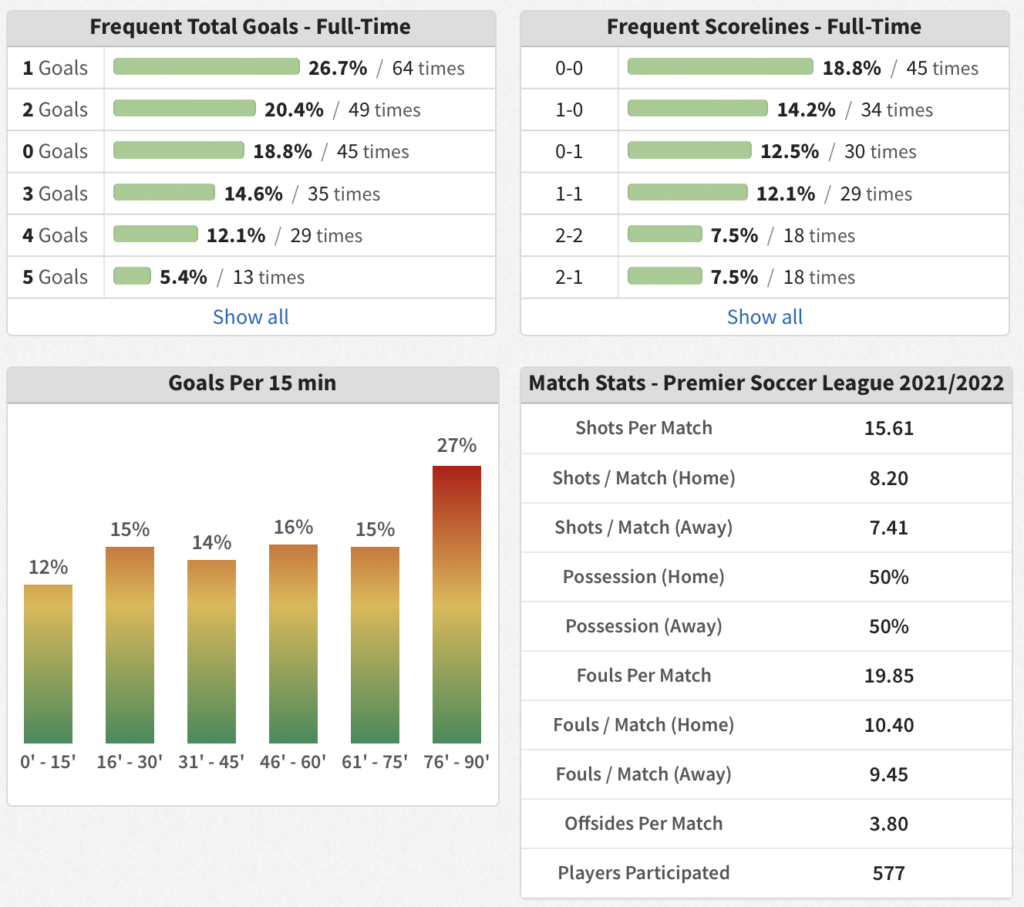
In terms of top players, Peter Shalulile was head and shoulders above the rest on the goal scoring charts while Bienvenu Eva Nga statistically outperformed expectations in a goal-shy Chippa United side. Mamelodi Sundowns players also featured in the top assists charts with four of their players in and among the top providers of a chart topped by Khama Billiat of Kaizer Chiefs.
It’s no surprise that a number of goalkeepers kept ten clean sheets or more as a number of games ended with just a solitary goal scored but Hugo Marques did particularly well in goal with 15 shutouts for Cape Town City F.C.

Judging by the stats above one can understand fans choosing to switch the channel and watch more entertaining content. The PSL has to compete with other global leagues as well as content on streaming platforms and the showing last season did not leave audiences baying for more. A contender to truly challenge Sundowns who seem to start every season with one hand on the title is needed to bring back some much needed excitement and hopefully draw crowds back to televisions and stadiums around the country
That concludes the review of the season that was.
Related Posts
June 12, 2024
MultiChoice Financials Reflect Difficult Year
MultiChoice Group Limited (MCG) has released its financial results for the year…
June 11, 2024
Uganda Enters Into Agreement With Turkish Company On Hoima Stadium Build
The Government of Uganda has entered into a contract with the Turkish company…
June 10, 2024
Canal+ and MTN Cameroon Launch Streaming Platform
MTN Cameroon and Canal+ have launched a streming platform offering films,…

